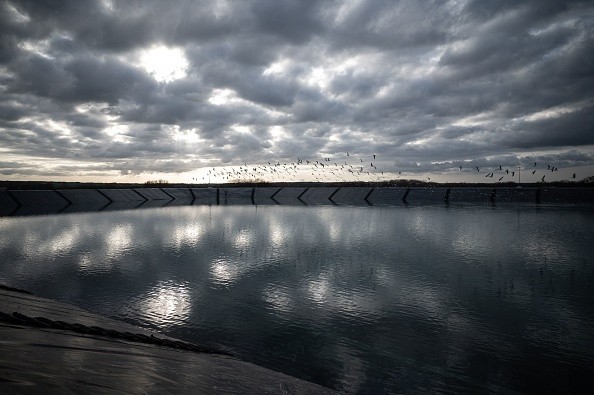Stormwater ponds are being developed in greater numbers as Florida and other states become increasingly urbanized.
There are currently 76,000 of these ponds in Florida. According to a new research, the newer ones emit more carbon than they store.
The researchers anticipate that this discovery will help policymakers and others decide when, where, and how to develop stormwater ponds.
Stormwater ponds lead to the buildup of carbon

According to Nature, stormwater ponds are constructed ecosystems meant to prevent flooding and retain sediment in urban watersheds.
They are the most widely utilized stormwater control tool in the United States, although their biogeochemical processes and consequences are frequently disregarded.
Because of their similarities to other small lentic systems, persistently wet stormwater ponds (SWPs) are thought to play an important role in Carbon processing in urban ecosystems.
SWPs and natural ponds, for example, have tiny individual sizes, shallow marine columns, high sedimentation and perimeter to water volume ratios, and frequent mixing.
These pond characteristics lead to rapid carbon buildup, high internal productivity throughout the growth season, frequent heterotrophy, and increased carbon gas evasion to a proportionally greater extent than larger bodies of water.
According to Mary Lusk, a UF/IFAS associate professor of soil and water sciences, this discovery suggests that some ponds are doing us a disservice in terms of ecosystems, as per ScienceDaily.
She predicts that as industrialization continues, there will be an increase in the number of these little man-made ponds in urban areas.
This research, according to Lusk, a research professor at the UF/IFAS Gulf Coast Research and Education Center, will assist scientists to calculate how much carbon is entering the air from such ponds on a regional scale.
The sheer quantity of ponds drove Lusk to investigate if they may have a greater environmental impact than people believe.
She had planned to examine nitrogen and phosphorus in ponds, but one of her graduate students, Audrey Goeckner a Ph.D. student in soil and water sciences at the main UF/IFAS campus in Gainesville, suggested she look into carbon.
When she found that she would be working in stormwater ponds similar to the ones she had grown up in surrounding her neighborhood, Goeckner was curious. How do they stack up against other aquatic ecosystems?
Carbon emission will increase overtime
Goeckner devised a method for measuring the quantity of carbon emitted by ponds.
The research ponds are located in Manatee County, Florida, which is part of the Tampa Bay metro region.
It has a mild climate, with an average temperature of 22.8 °C and 140 cm of rainfall, 60% of which occurs during a distinct yearly rainy season that lasts from May to September.
Goeckner entered the ponds in two connected canoes. To balance the weight, she and a lab worker sat in separate canoes.
Moreover, Goeckner next took muck from the ponds' bottoms and assessed the depth of the muck above a sandy layer of sediment, which indicated when the pond was built and how much organic carbon was stored in it.
Their findings imply that while they are fresh, they emit substantial amounts of carbon from the landscape and may increase storage over time, according to Lusk.
This suggests that older ponds are doing less harm to the ecology than newer ponds.
However, given the rate of new house construction in Florida and the rate at which new stormwater ponds are being created in all of that new development, they will always have a fresh new batch of young ponds that are simply spewing carbon out into the sky.
Related article : US Faces Deadliest Extreme Weather Year With a Rise in Carbon Emission
© 2025 NatureWorldNews.com All rights reserved. Do not reproduce without permission.





